1. Introduction: Understanding Fast Fashion Fatigue
Fast fashion fatigue is becoming an increasingly prevalent issue as consumers grow weary of the relentless cycle of buying and discarding clothing at a rapid pace. This phenomenon arises from the fast fashion industry’s emphasis on speed and low cost, leading to environmental concerns and ethical questions about labor practices. In this introduction, we explore how this fatigue is shaped by a growing awareness of the ecological footprint of disposable fashion, the social implications of mass production, and a shift towards valuing quality over quantity. By understanding the origins and impacts of fast fashion fatigue, we can begin to consider more sustainable alternatives and make informed choices about our wardrobes.
What is Fast Fashion?
Fast fashion replicates recent catwalk trends and high-fashion designs, mass-producing them at a low cost and rapidly distributing them to retail stores to capitalize on peak demand (Joy et al., 2012). This business model accelerates design, production, distribution, and marketing, enabling retailers to offer a wide variety of products at low prices. However, the negative impacts of fast fashion include the use of inexpensive, often toxic textile dyes, significantly contributing to the fashion industry being one of the largest polluters (Cline, 2012). Fast fashion leverages trend replication and low-quality materials such as synthetic fabrics to bring inexpensive styles to consumers, who may not be aware of the environmental consequences.
How Trend Cycles Have Become Faster and More Exhausting
The constant influx of new collections creates a cycle of “fast fashion fatigue,” where garments lose their value and novelty almost as quickly as they are purchased (Bhardwaj & Fairhurst, 2010). Designers are often required to create new “it bags” every few months and design hit collections in very short time frames. This relentless demand for novelty leads to consumers being bombarded with images and messages, leading to confusion about personal style and identity. Fast fashion brands often target young people, especially those immersed in social media and influencer culture, fueling a constant desire for the latest trends.
The Negative Impact of Fast Fashion on the Environment and Personal Style
Fast fashion has significant environmental and social consequences, including unsustainable materials, poor manufacturing, excess waste, and unethical working conditions (Morgan, 2015). The industry consumes vast amounts of water, contributes significantly to global carbon emissions, and generates substantial textile waste. The low cost of production often favors synthetic materials and minimal pollution abatement measures, exacerbating environmental damage. Furthermore, the emphasis on trends and rapid consumption fosters a throwaway culture, promoting overconsumption and wastefulness (Fletcher, 2010). This system not only harms the environment but also devalues the clothing itself, leading to garments being worn only a few times before disposal.
The Benefits of Choosing Timeless Fashion Elements
Building a slower wardrobe is key to living more sustainably, saving money, and standing out from the crowd. Appreciating a smaller, well-curated wardrobe of timeless pieces allows for long-term wear rather than just a few weeks. Slow fashion brands, in contrast to fast fashion, maintain their style over time, prioritizing enduring appeal over fleeting trends (Clark, 2008). By investing in classic pieces and a more thoughtful approach to consumption, individuals can reduce their environmental footprint and cultivate a more authentic personal style.

2. Why Fast Fashion Fatigue Happens
First-person fatigue occurs when a writer or reader becomes weary of a story told from a first-person perspective. This fatigue arises because consistently using “I” or “we” can limit the narrative’s breadth, making it challenging to present events beyond the narrator’s experience or knowledge. Readers may feel restricted by the singular viewpoint, missing out on other characters’ internal thoughts or different angles of the story. Additionally, if the narrator is overly self-focused or the narrative lacks variety, it can lead to monotony, reducing the engagement and dynamism typically anticipated in storytelling. This limitation can make stories feel less immersive or nuanced, contributing to a sense of fatigue.
The Psychological Impact of Constant Trends
Fast fashion triggers the brain’s reward system by providing instant gratification, making consumers feel good about their purchases (Dittmar, 2008). The release of dopamine, a neurotransmitter associated with pleasure, leads to impulsive buying behavior. This can create an addictive cycle, with brands using tactics like limited-time deals and constant new collections to keep customers engaged. According to Dr. Terrelonge, people shop for fast fashion to maximize positive emotions and minimize negative ones, promoting hedonic well-being (Terrelonge, 2020). Fitness influencer Ferrante also notes that the fast-fashion industry combined with social media can be “anxiety-inducing” (Ferrante, 2021).
Overconsumption and Decision Fatigue
Overconsumption in ultra-fast fashion perpetuates a culture of dissatisfaction (Schwartz, 2004). The abundance of choices can lead to “choice paralysis,” where individuals struggle to make decisions due to the fear of missing out or making the wrong choice. This cycle of constantly seeking the next best thing often leads to feelings of inadequacy and the sense that wardrobes are never complete. Garson & Shaw’s research indicates that the pressure to frequently replace clothing is a significant driver of anxiety among young people (Garson & Shaw, 2023).
Poor-Quality Clothing Leading to Quick Wear and Tear
Fast fashion often relies on low-quality materials, contributing to environmental harm (Niinimäki et al., 2020). This devaluation of quality in favor of cheap, on-trend looks results in clothes that quickly wear out. Such practices foster a culture of disposability. Consumers may experience stress and guilt from purchasing cheaply made garments that do not last.
The Rise of Micro-Trends and Their Short Lifespan
The constant emergence of new trends in the fast fashion industry contributes to a sense of obsolescence, where garments lose their appeal rapidly (Rocamora, 2009). This cycle encourages consumers to continuously seek out the latest styles, exacerbating the problem of overconsumption and waste. This can lead to anxiety and stress about keeping wardrobes up to date. Gen Z is particularly susceptible, with half admitting to buying fast fashion simply to fit in (Barnes & Lea-Greenwood, 2006).
Mental Health and Social Media Pressures
The constant pressure to buy fast fashion significantly impacts mental health, especially among younger generations. Social media amplifies these pressures, with influencers showcasing the latest trends and creating a sense of urgency to purchase new items (Hudders et al., 2021). This can lead to feelings of inadequacy, anxiety, and a constant need to keep up. Garson & Shaw’s research indicates that 41% of Americans, and 50% of Gen Z, believe that the pressure from fast fashion harms mental health (Garson & Shaw, 2023). The need to constantly update wardrobes to avoid outfit repeats, driven by social media visibility, further exacerbates the problem. Studies also reveal that fast fashion can trigger mental health conditions such as stress, insecurity, shame, and climate anxiety (Sweeny & Bellezza, 2010).

Erosion of Personal Style
The relentless pursuit of trends can lead to an erosion of personal style, as individuals prioritize conforming to fleeting fads over developing a unique aesthetic (Entwistle, 2000). Instead of curating a wardrobe that reflects their personality and preferences, consumers become trapped in a cycle of constantly chasing the latest looks, resulting in a disjointed and unfulfilling collection of clothes. This can lead to feelings of inauthenticity and a lack of confidence in one’s own sense of style.
Financial Strain and Regret
The constant need to buy new clothes to keep up with trends can put a significant strain on personal finances. Impulse purchases and the accumulation of cheap, disposable garments can quickly add up, leading to feelings of regret and financial instability (Zimmerman, 2003). Consumers may find themselves trapped in a cycle of debt and dissatisfaction, as they continually chase the latest trends without ever feeling truly content with their wardrobe. Furthermore, the low cost of fast fashion items often masks the long-term cost of replacing them frequently, making it a financially unsustainable practice.
Ethical Concerns and Cognitive Dissonance
Awareness of the ethical implications of fast fashion, such as poor working conditions and environmental degradation, can create cognitive dissonance for consumers (Carrigan & Attalla, 2001). Knowing that their purchases contribute to these problems can lead to feelings of guilt and unease, especially for those who value ethical and sustainable practices. However, the allure of cheap, trendy clothing can sometimes override these concerns, leading to a conflict between values and behavior. This internal conflict can contribute to stress and anxiety, as consumers struggle to reconcile their desire for fashionable clothing with their awareness of the negative consequences.
3. The Key Elements of a Timeless Wardrobe
A timeless wardrobe is characterized by its versatility, quality, and classic style that transcends fleeting fashion trends. Key elements include a well-fitted blazer, which adds polish to both casual and formal outfits, and a crisp white shirt, which serves as a versatile base for various looks. A pair of tailored trousers and a classic pair of jeans are essential for creating both sophisticated and relaxed ensembles. A little black dress is a staple for women, offering elegance and simplicity for numerous occasions. Quality shoes, such as leather loafers or boots, and a neutral-colored coat provide functionality and style year-round. Accessories like a silk scarf, a leather handbag, and understated jewelry can enhance the wardrobe’s timeless appeal. Prioritizing high-quality fabrics and well-made basics ensures that each piece remains durable and stylish through changing seasons and tastes.
Classic Silhouettes
Classic silhouettes include clothing items like trench coats, blazers, and white shirts that remain stylish over extended periods (Lurie, 1981). These pieces are characterized by their simple, elegant lines and their ability to flatter a variety of body types. The trench coat, for example, has been a staple in wardrobes for over a century, offering both style and practicality with its water-resistant fabric and timeless design. Similarly, a well-tailored blazer can instantly elevate any outfit, adding a touch of sophistication and polish. White shirts, whether crisp and tailored or soft and flowing, are incredibly versatile and can be dressed up or down for a variety of occasions. Investing in these classic silhouettes ensures that you have a foundation of wardrobe staples that will remain relevant and stylish for years to come, reducing the need to constantly chase the latest trends. It is critical to consider classic silhouettes, which are characterized by their simple lines, exquisite tailoring, and durability. These pieces are often adaptable, allowing for personalization through accessories and styling choices.
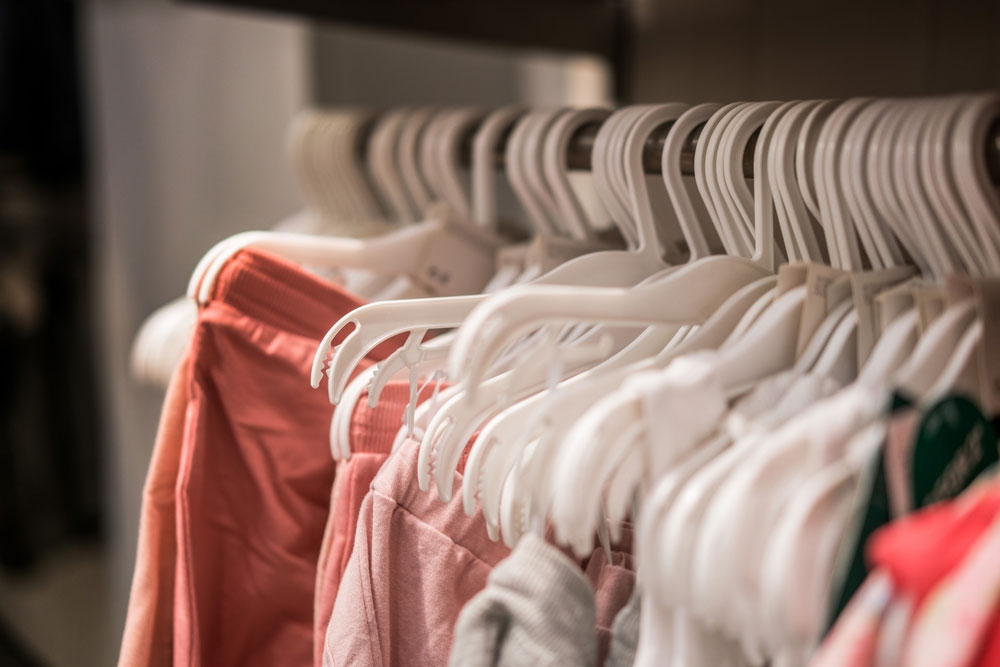
Neutral & Versatile Colors:
A neutral color palette enhances longevity by ensuring that clothing items can be easily mixed and matched, transcending seasonal trends (Calefato, 2004). Colors like black, white, gray, navy, beige, and olive green form the backbone of a timeless wardrobe. These hues are versatile and can be effortlessly combined to create a wide range of outfits. Neutral colors also provide a blank canvas for accessorizing with bolder colors and patterns, allowing you to express your personal style without sacrificing the longevity of your wardrobe. By building a collection of clothing in neutral colors, you can ensure that your pieces will always coordinate well together, making it easier to create stylish and cohesive looks. The versatility of neutral colors allows for experimentation with different textures and fabrics, adding depth and interest to your wardrobe. Moreover, neutral colors are inherently elegant and sophisticated, making them suitable for both casual and formal occasions. This focus on versatility and cohesion enables a more sustainable and stress-free approach to fashion, reducing the temptation to constantly update your wardrobe with the latest seasonal colors.
Quality Over Quantity
Investing in well-made garments ensures durability and timeless appeal, reducing the need for frequent replacements (Gwilt, 2011). Prioritizing quality over quantity means choosing clothing made from durable materials, with meticulous construction and attention to detail. While these pieces may come with a higher price tag, they offer a far greater value in the long run due to their longevity and ability to withstand wear and tear. Look for natural fibers like wool, cotton, linen, and silk, which are not only more durable but also more comfortable and breathable than synthetic materials. Pay attention to details like reinforced seams, sturdy zippers, and well-finished hems, which are indicators of a high-quality garment. Investing in a smaller number of well-made pieces will not only save you money in the long run but also reduce your environmental impact by decreasing the demand for fast fashion. Furthermore, higher-quality clothing often fits and drapes better, enhancing your overall appearance and boosting your confidence. This shift in focus from quantity to quality encourages a more mindful and appreciative approach to fashion, fostering a deeper connection to the clothes you own.
Functional Fashion:
Comfort and practicality in timeless pieces prioritize wearability and longevity, making them essential components of a sustainable wardrobe (Crane, 2000). Functional fashion emphasizes clothing that is both stylish and practical for everyday life. This means choosing pieces that are comfortable to wear, easy to care for, and suitable for a variety of activities. A classic example of functional fashion is a pair of well-fitting jeans made from durable denim. Jeans are versatile, and comfortable, and can be dressed up or down for a variety of occasions. Similarly, a simple cotton t-shirt, a comfortable knit sweater, and a pair of practical yet stylish shoes are all essential components of a functional wardrobe. By prioritizing comfort and practicality, you can ensure that your clothes are not only stylish but also enjoyable to wear, increasing the likelihood that you will keep them for years to come. Functional fashion also encourages a more relaxed and effortless approach to style, allowing you to focus on other aspects of your life without sacrificing your personal appearance. Additionally, functional pieces are often easier to mix and match, making it simpler to create a variety of outfits with a limited number of items. This approach to fashion promotes sustainability by reducing the need to constantly buy new clothes and encouraging a more conscious and practical approach to dressing.
Fabric and Material Choices
The selection of appropriate fabrics is crucial for constructing a wardrobe that lasts. Choosing natural, sustainable, and high-quality materials can substantially extend the life of garments (Henninger, 2015). Materials such as organic cotton, linen, wool, and silk not only offer superior comfort but also reduce environmental impact. For example, organic cotton is grown without synthetic pesticides and fertilizers, making it a more sustainable choice than conventional cotton. Linen, derived from flax plants, is highly durable and requires less water and pesticides to grow. Wool is a natural fiber that provides warmth, breathability, and resilience, while silk offers luxury and durability when properly cared for. Investing in clothing made from these materials ensures that the items will withstand frequent wear and maintain their appearance over time. Additionally, paying attention to fabric weight and weave can further enhance durability; for instance, a tightly woven fabric will resist wear and tear more effectively than a loosely woven one. This emphasis on fabric quality promotes a sustainable approach to fashion by reducing the need for frequent replacements and contributing to a more environmentally friendly wardrobe.
Proper Fit and Tailoring
Ensuring that garments fit well is essential for both comfort and longevity (Hollander, 1995). Properly fitted clothing not only looks better but also experiences less stress and wear during movement. Investing in tailoring services can significantly improve the fit of off-the-rack items, ensuring that they flatter the body and move comfortably. A well-tailored garment will drape correctly, preventing unnecessary strain on seams and fabric. For example, a blazer that fits snugly across the shoulders and chest will maintain its shape better than one that is too tight or too loose. Similarly, trousers that are hemmed to the correct length will avoid dragging on the ground and wearing out prematurely. By prioritizing proper fit and tailoring, individuals can extend the life of their clothing and enhance their overall appearance. This approach also encourages a more personalized and thoughtful approach to fashion, as it involves taking the time to adjust and customize garments to fit individual body shapes and preferences.
Care and Maintenance
Proper care and maintenance are vital for preserving the quality and appearance of clothing (Slater, 2003). Following care label instructions, using appropriate washing techniques, and storing garments correctly can significantly extend their lifespan. For example, washing delicate items by hand or using a gentle cycle can prevent damage to the fabric and embellishments. Air-drying clothes instead of using a machine dryer can reduce shrinkage and wear on fibers. Storing clothes in a cool, dry place and using padded hangers can help maintain their shape and prevent wrinkles. Additionally, addressing minor repairs promptly, such as mending tears or replacing buttons, can prevent further damage and prolong the life of a garment. Investing in high-quality laundry products and fabric care tools can also contribute to the longevity of clothing. By adopting a mindful approach to care and maintenance, individuals can ensure that their garments remain in excellent condition for years to come, reducing the need for frequent replacements and promoting a more sustainable approach to fashion.
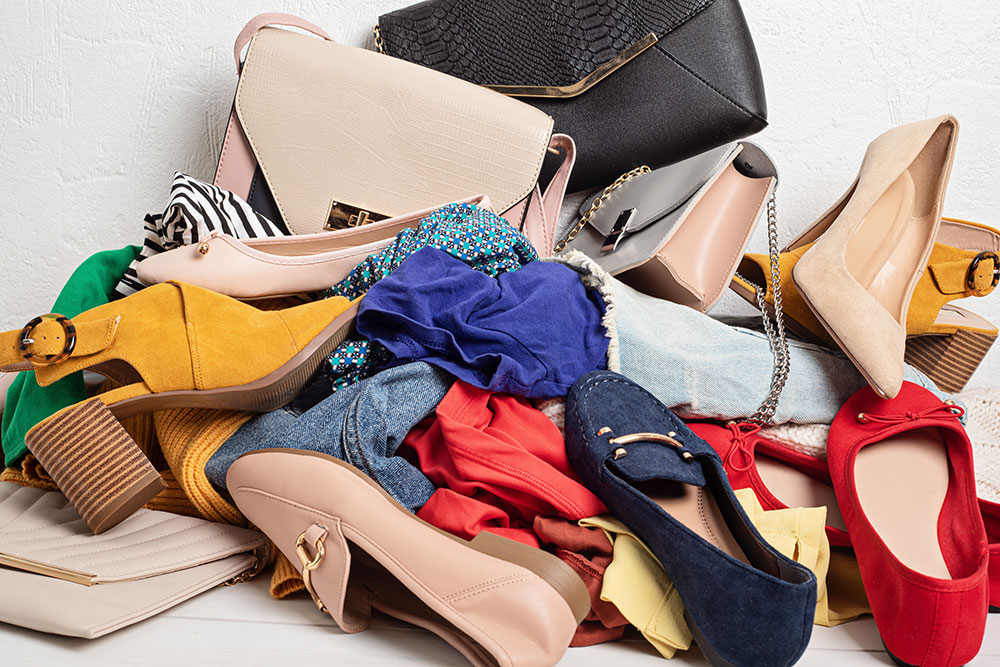
4. How to Identify Timeless Fashion Pieces
Timeless fashion refers to clothing and style choices that remain relevant and stylish regardless of current trends. These pieces often feature classic silhouettes, neutral colors, and high-quality materials that endure over time. Examples of timeless fashion items include a well-fitted trench coat, a little black dress, a pair of well-tailored trousers, and a crisp white shirt. By focusing on these enduring elements, one can build a wardrobe that offers versatility and longevity, ensuring you look polished and elegant in any era.
Iconic Wardrobe Staples That Have Stood the Test of Time
Identifying and investing in iconic wardrobe staples such as classic denim jeans, simple black dresses, and tailored jackets ensures a foundation of enduring style (Breward, 1995). These pieces have consistently remained in fashion across different eras and are versatile enough to be styled in various ways. A well-fitted pair of denim jeans, for example, can be dressed up with a blazer and heels or dressed down with a t-shirt and sneakers, making them a staple for any wardrobe. Similarly, a simple black dress is a timeless classic that can be worn to a variety of events, from cocktail parties to formal dinners. These enduring pieces provide a reliable base for building a wardrobe that transcends seasonal trends and reflects a sense of timeless elegance.
Recognizing Classic vs. Trendy Elements in Clothing
Differentiating between classic and trendy elements in clothing involves assessing whether a piece is likely to remain stylish beyond the current season (Davis, 1992). Classic elements are characterized by their simplicity, versatility, and timeless appeal, while trendy elements are often characterized by their novelty, exaggeration, and short lifespan. Consider the silhouette, color, and details of a garment. Classic pieces tend to have clean lines, neutral colors, and minimal embellishments, while trendy pieces often feature unconventional shapes, bold colors, and elaborate details. By recognizing these distinctions, you can make more informed purchasing decisions and avoid investing in items that will quickly fall out of fashion.
The Role of Fabric Quality and Construction in Long-Lasting Style
Fabric quality and construction play a crucial role in the longevity of a garment, with well-made pieces maintaining their appearance and structure over time (Kadolph & Langford, 2001). High-quality fabrics like wool, cotton, linen, and silk are not only more durable but also drape better and feel more comfortable against the skin. Meticulous construction techniques, such as reinforced seams, sturdy zippers, and well-finished hems, ensure that a garment can withstand regular wear and tear without losing its shape or falling apart. When assessing the quality of a garment, pay attention to the details and look for signs of craftsmanship, such as even stitching, clean lines, and durable hardware. Investing in well-made pieces ensures that your clothes will not only look good but also last longer, reducing the need for frequent replacements.
Finding Brands That Prioritize Classic and Sustainable Designs
Seek out brands that prioritize classic designs and sustainable practices, ensuring both style longevity and ethical production (McDonough & Braungart, 2002). Look for brands that use eco-friendly materials, employ fair labor practices, and design clothing that is meant to last. These brands often prioritize quality over quantity and focus on creating timeless pieces that can be worn for years to come. Researching a brand’s values and production methods can help you make more informed purchasing decisions and support companies that are committed to both style and sustainability. By choosing brands that prioritize classic designs and ethical practices, you can build a wardrobe that is both stylish and responsible.
Versatility and Adaptability to Personal Style
Timeless fashion pieces possess a unique versatility that allows them to adapt seamlessly to various personal styles (Polhemus, 1994). These items serve as a blank canvas, enabling individuals to express their individuality through creative styling and accessorizing. For instance, a classic white button-down shirt can be transformed from a professional office look to a casual weekend outfit simply by changing the accompanying pieces. Its ability to blend effortlessly with different aesthetics ensures that it remains a relevant and cherished component of any wardrobe, regardless of evolving personal preferences. This adaptability is a hallmark of timeless fashion, providing enduring value beyond fleeting trends.
Enduring Color Palettes and Patterns
Certain color palettes and patterns have proven to be timeless, contributing to the longevity of fashion pieces (Holt & Cameron, 2010). Neutral colors like black, white, gray, navy, and beige are foundational in classic wardrobes due to their ability to complement various styles and skin tones. Similarly, patterns such as stripes, polka dots, and houndstooth have maintained their appeal over decades, providing a touch of elegance without succumbing to trend-driven obsolescence. The enduring nature of these colors and patterns ensures that garments remain stylish and relevant, capable of being incorporated into diverse looks across seasons and occasions.
Construction and Tailoring Techniques
The durability and longevity of a garment are significantly influenced by its construction and tailoring techniques (Cooklin, 1985). High-quality construction involves precise stitching, reinforced seams, and meticulous attention to detail, all of which contribute to the garment’s ability to withstand regular wear and tear. Tailoring plays a crucial role in ensuring a perfect fit, which not only enhances comfort but also prolongs the life of the clothing. Well-tailored pieces retain their shape and structure over time, preventing premature sagging or distortion. Therefore, when selecting timeless fashion items, it is essential to prioritize garments that exhibit superior construction and offer the option for professional tailoring to achieve an enduring and impeccable fit.
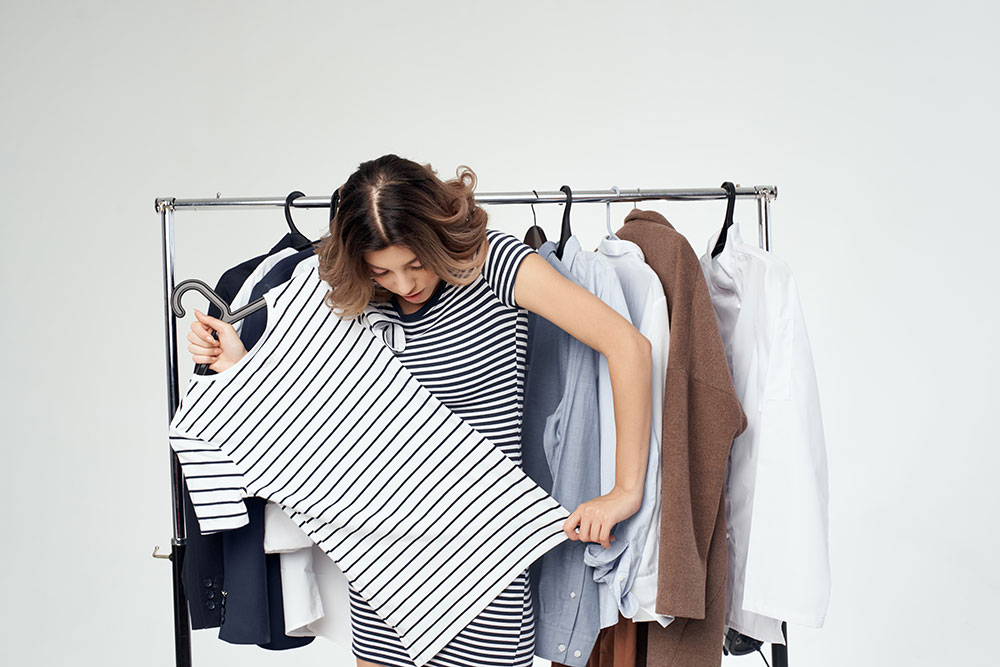
Consideration of Body Type and Proportions
When identifying timeless fashion pieces, it is essential to consider how well they complement individual body types and proportions (Pendergast, 2003). Certain silhouettes and styles naturally enhance different figures, contributing to a flattering and balanced appearance. For example, A-line skirts can accentuate the waist and create a slimming effect, while wrap dresses can highlight curves and provide a customizable fit. Understanding which styles work best for your body type ensures that the selected pieces remain flattering and stylish over time, regardless of changing trends. By prioritizing garments that enhance your natural proportions, you can create a wardrobe that promotes confidence and longevity.
Minimalism and Avoiding Embellishments
Timeless fashion pieces often adhere to principles of minimalism, avoiding excessive embellishments and ornate detailing that can quickly become dated (Kawamura, 2005). Garments with clean lines, simple designs, and understated elegance tend to have a longer lifespan in wardrobes. Minimalism allows for greater versatility, as these pieces can be easily paired with various accessories and styled in multiple ways to create diverse looks. By focusing on simplicity and avoiding trendy embellishments, individuals can curate a wardrobe of enduring classics that remain stylish and relevant across seasons and years. This approach not only promotes longevity but also encourages a more mindful and intentional approach to fashion.
Analyzing Cost Per Wear
A key aspect of identifying timeless fashion pieces is evaluating their cost per wear (Jackson & Shaw, 2009). This involves calculating the total cost of a garment against the number of times it is likely to be worn. While a higher upfront investment in a quality item may seem daunting, its longevity and versatility often result in a lower cost per wear compared to cheaper, trend-driven items that are quickly discarded. By focusing on the long-term value and wearability of a garment, you can make more informed decisions about what to include in your wardrobe. Prioritizing pieces with a low cost per wear ensures that you are investing in items that will provide lasting value and reduce the need for frequent replacements.
Ignoring Hype and Marketing
Timeless fashion often transcends the hype and marketing tactics associated with fleeting trends (Klein, 1999). It’s crucial to cultivate an independent perspective and resist the pressure to buy items solely because they are being heavily promoted. Instead, focus on selecting garments that genuinely resonate with your personal style and align with your existing wardrobe. Ignoring the constant barrage of marketing messages allows you to make more intentional and thoughtful purchases, ensuring that each item contributes to a cohesive and enduring style. By prioritizing personal taste over fleeting trends, you can curate a wardrobe of timeless pieces that reflect your authentic self.
Seeking Expert Advice and Second Opinions
When in doubt, seeking expert advice from stylists, tailors, or knowledgeable sales associates can provide valuable insights into identifying timeless fashion pieces (Wilson, 1985). These professionals can offer objective opinions on fit, fabric quality, and overall style, helping you make informed decisions. Additionally, getting second opinions from trusted friends or family members can provide additional perspectives and ensure that the selected pieces are both flattering and versatile. Collaboration and consultation can enhance your ability to recognize and invest in items that will stand the test of time and contribute to a well-rounded and enduring wardrobe.
5. Smart Shopping Strategies to Avoid Fast Fashion Fatigue
Smart shopping strategies to avoid fast fashion fatigue involve embracing a mindful and intentional approach to consumerism. Begin by creating a versatile capsule wardrobe that focuses on quality over quantity, selecting timeless pieces that can be mixed and matched across seasons. Prioritize purchasing from brands committed to ethical production and sustainability, ensuring that your clothing choices reflect both style and conscience. Regularly assess your wardrobe to understand what you truly need, minimizing impulsive purchases driven by fleeting trends. Additionally, explore second-hand shopping options and clothing swaps to refresh your wardrobe in an eco-friendly manner. By focusing on these smart shopping practices, you can enjoy fashion without the stress and waste often associated with fast fashion.
How to Differentiate Quality from Mass Production
Differentiating quality from mass production involves examining the materials, construction, and finishing of a garment to assess its durability and craftsmanship (Gereffi, 1999). Look closely at the fabric – is it a natural fiber like cotton, linen, or wool, or a synthetic blend? Natural fibers tend to be more durable and breathable. Inspect the seams for even stitching and reinforced areas in high-stress points. Check for quality hardware like zippers and buttons that are securely attached. Mass-produced items often cut corners on these details, resulting in garments that quickly fall apart. By paying attention to these indicators, you can discern between a well-made piece that will last and a cheaply made item destined for the landfill.
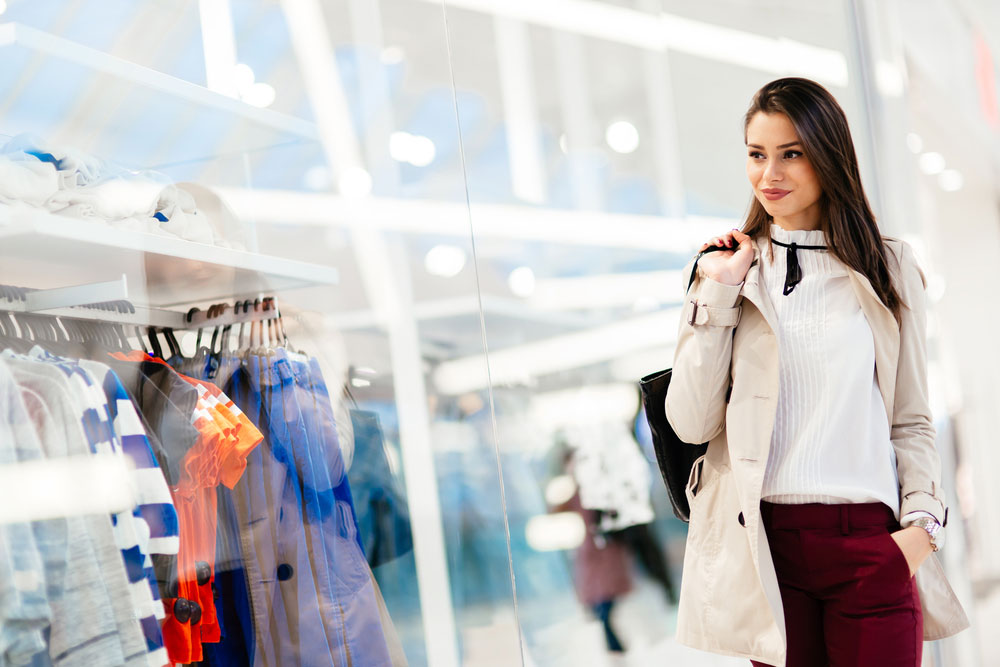
Tips for Avoiding Impulse Purchases
Avoiding impulse purchases can be achieved by employing strategies such as waiting periods, creating shopping lists, and identifying personal style preferences (Beatty & Ferrell, 1998). Before buying anything, take a moment to pause and ask yourself if you truly need it or if you’re just caught up in the excitement of a sale. Implementing a 24-hour or even a week-long waiting period can help you make a more rational decision. Create a shopping list based on gaps in your wardrobe and stick to it. Understanding your personal style preferences will also help you avoid buying items that don’t align with your overall aesthetic, reducing the likelihood of impulse purchases.
Creating a Shopping List Based on Personal Style and Needs
Creating a shopping list based on personal style and needs helps to focus purchasing decisions on essential items that complement existing wardrobe pieces (Solomon, 2009). Start by taking inventory of your current wardrobe and identifying any gaps or missing staples. Consider your lifestyle and the types of activities you engage in regularly. Do you need more professional attire for work, casual clothes for weekends, or special occasion outfits? Then, define your personal style by identifying the colors, silhouettes, and patterns that you gravitate toward. Use this information to create a detailed shopping list that prioritizes versatile and essential items that will enhance your existing wardrobe.
Secondhand and Vintage Shopping as an Alternative to Fast Fashion
Opting for secondhand and vintage shopping provides an alternative to fast fashion, offering unique, high-quality items while reducing demand for new production (Gregson & Crewe, 2003). Explore local thrift stores, consignment shops, and online marketplaces for pre-owned clothing. You can often find high-quality pieces at a fraction of the original price, while also reducing textile waste and supporting a more sustainable fashion system. Vintage stores often carry unique, well-made garments from past eras that can add character and style to your wardrobe. By embracing secondhand and vintage shopping, you can create a unique and sustainable wardrobe that reflects your personal style.
Setting a Budget and Sticking to It
Establishing a clear budget is crucial for responsible shopping and avoiding the pitfalls of fast fashion (Lusardi, 2008). Determine how much you can realistically spend on clothing each month or season, and allocate funds accordingly. Prioritize investments in high-quality, versatile items that will last, rather than impulse purchases of trendy, inexpensive garments. Track your spending to ensure you stay within your budget and avoid accumulating unnecessary debt. Adhering to a budget promotes mindful consumption and prevents overspending that often leads to fast fashion fatigue.
Prioritizing Versatile and Interchangeable Pieces
To maximize the value of your wardrobe and minimize unnecessary purchases, focus on acquiring versatile and interchangeable pieces that can be styled in multiple ways (Roach & Musa, 2005). Opt for classic silhouettes and neutral colors that can be easily mixed and matched to create a variety of outfits. Building a capsule wardrobe of essential items ensures that each piece contributes to a cohesive and functional collection. By prioritizing versatility, you can create a wide range of looks with a limited number of garments, reducing the need for constant shopping and promoting a more sustainable approach to fashion.
Researching Brands and Their Practices
Before making a purchase, take the time to research brands and their ethical and environmental practices (Ellen MacArthur Foundation, 2017). Look for companies that prioritize fair labor standards, sustainable materials, and transparent supply chains. Support brands that are committed to reducing their environmental impact and promoting social responsibility. By choosing to shop with ethical and sustainable brands, you can align your purchasing decisions with your values and contribute to a more responsible and sustainable fashion industry. This mindful approach not only reduces fast fashion fatigue but also promotes a positive impact on the planet and its people.
Avoiding Sales and Promotional Tactics
Fast fashion brands often employ aggressive sales and promotional tactics to entice consumers into making impulse purchases.
Continue Reading:
How to Avoid Fast Fashion Fatigue and Build a Sustainable Wardrobe / Part 1
How to Avoid Fast Fashion Fatigue and Build a Sustainable Wardrobe / Part 2
Written by Bilard Paratema
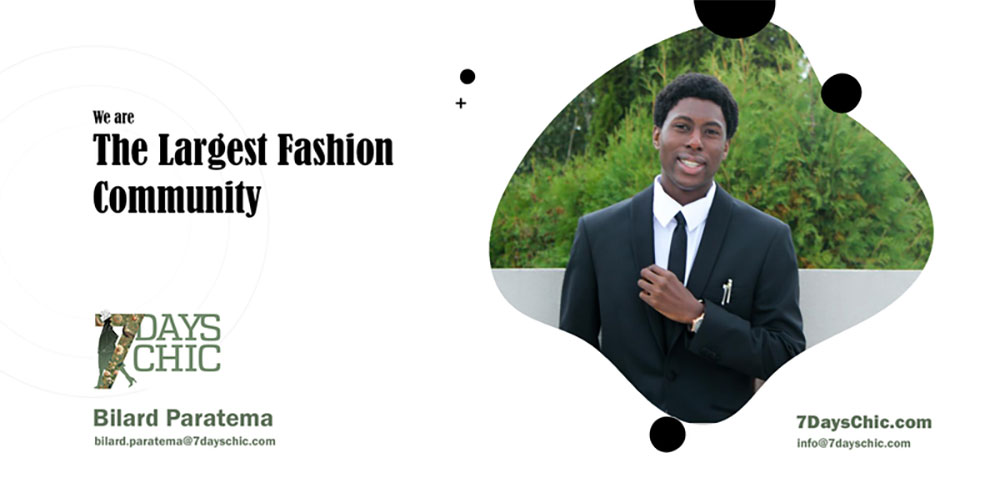


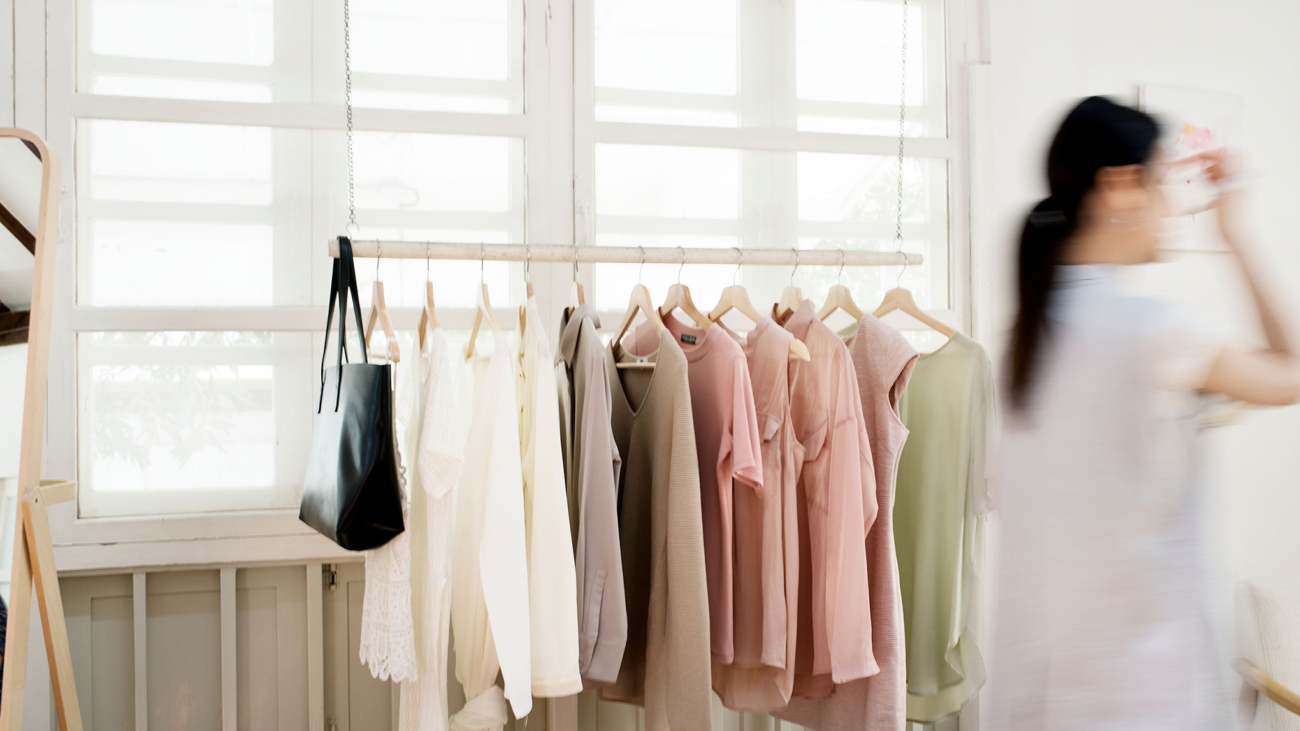
Add a Comment